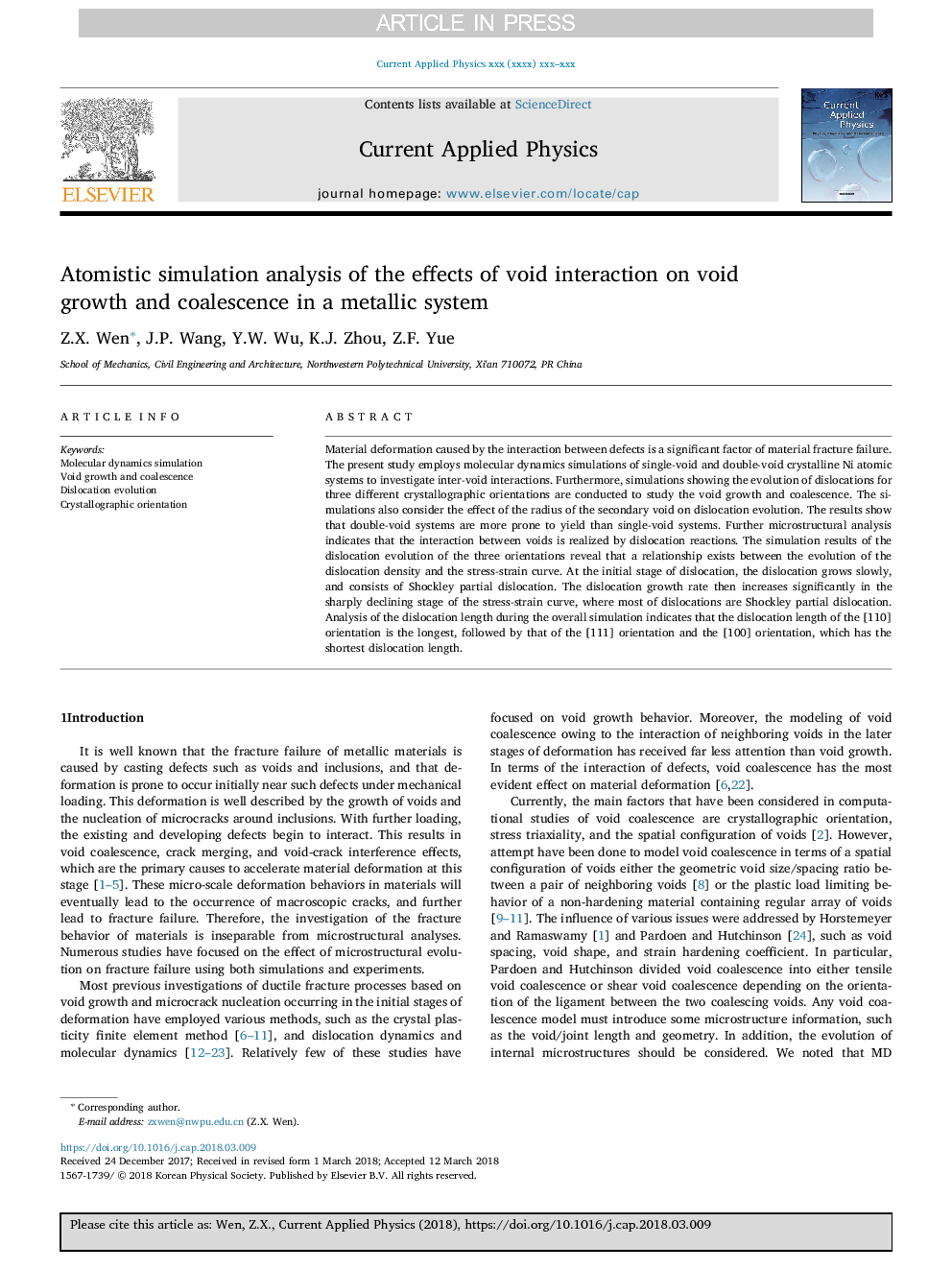ترجمه فارسی عنوان مقاله
تجزیه و تحلیل شبیه سازی اتومیستی اثر تعامل ناپیوسته بر رشد و تکثیر در یک سیستم فلزی
عنوان انگلیسی
Atomistic simulation analysis of the effects of void interaction on void growth and coalescence in a metallic system
| کد مقاله | سال انتشار | تعداد صفحات مقاله انگلیسی |
|---|---|---|
| 95601 | 2018 | 8 صفحه PDF |
منبع

Publisher : Elsevier - Science Direct (الزویر - ساینس دایرکت)
Journal : Current Applied Physics, Volume 18, Issue 6, June 2018, Pages 744-751
ترجمه کلمات کلیدی
شبیه سازی دینامیک مولکولی، رشد و تکثیر ناپایدار، تکامل جابجایی، جهت گیری کریستالوگرافی،
کلمات کلیدی انگلیسی
Molecular dynamics simulation; Void growth and coalescence; Dislocation evolution; Crystallographic orientation;

